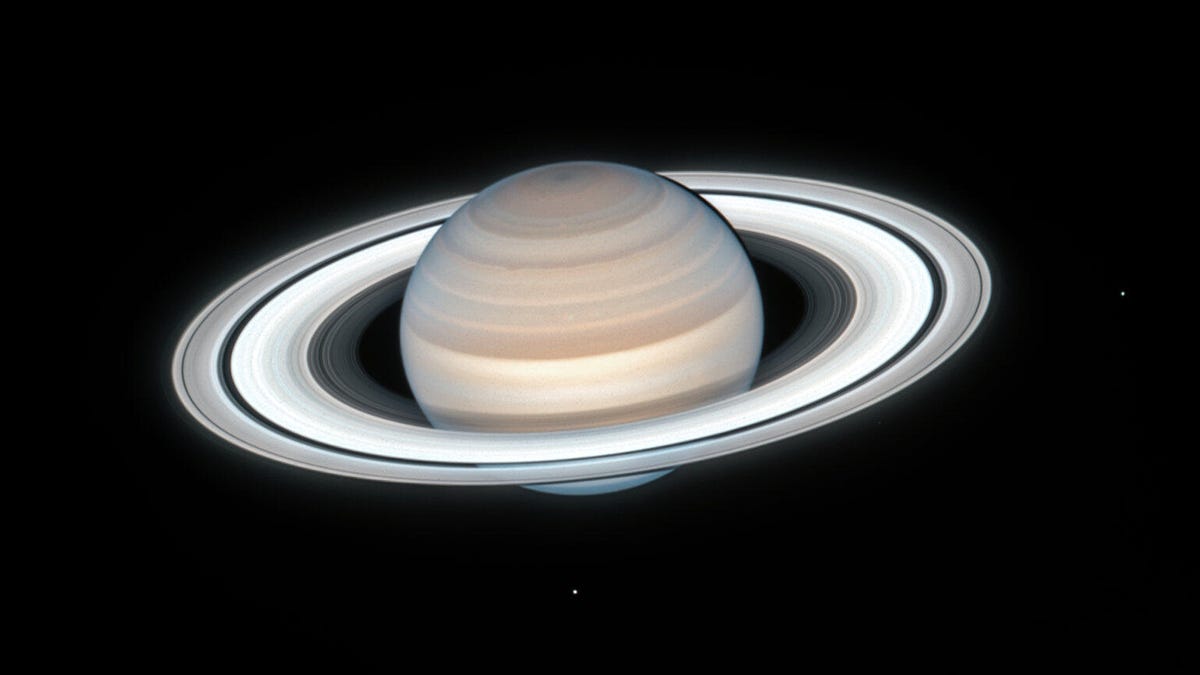Saturn and Jupiter show off: How to watch the planets rule August nights
Break out the binoculars and telescopes. NASA says it's the best time this year to view the two planets.

The Hubble Space Telescope took a fresh look at Saturn during its Northern Hemisphere summer.
Saturn, with its glorious rings, is a gem in the night sky. Jupiter, the jumbo gas giant, is another looker and some of its moons can be seen with binoculars. August is a prime viewing month for both planets.
The night of Sunday, Aug. 1, and morning of Monday, Aug. 2, marked Saturn's opposition -- when it was lined up with the sun and Earth was in the middle, like a celestial sandwich. Jupiter's opposition is coming up on Aug. 19. As with Saturn's opposition, Jupiter will be visible all night and reach its highest point around midnight.
"Opposition does technically have a precise moment when the sun, Earth, and the planet line up. But in practice, it's better to think of it as a period of time, usually about a month," said NASA in an August skywatching update. The space agency suggested this could be the best time this year for viewing Saturn and Jupiter.
The annual opposition typically means a planet is brighter than usual, but the Minnesota Institute for Astrophysics notes "the difference will hardly be noticeable, given how far out Jupiter, and especially Saturn, orbit."
A stargazing app can help you dial in the locations of Saturn and Jupiter. When it comes to Jupiter, a good pair of binoculars can let you spot its four biggest moons looking like nearby specks of light. A small telescope can help bring Saturn's storied rings into focus. With the right gear, you might even spot its biggest moon Titan lurking close to the planet.
You don't have to hit opposition on the nose to enjoy the spectacle. Saturn and Jupiter should be easy to spot in the dark for days on either side of the main event. The two planets are named for gods in Roman mythology, and they'll be living up to their legends by reigning over our night skies for most of the month.
Follow CNET's 2021 Space Calendar to stay up to date with all the latest space news this year. You can even add it to your own Google Calendar.

